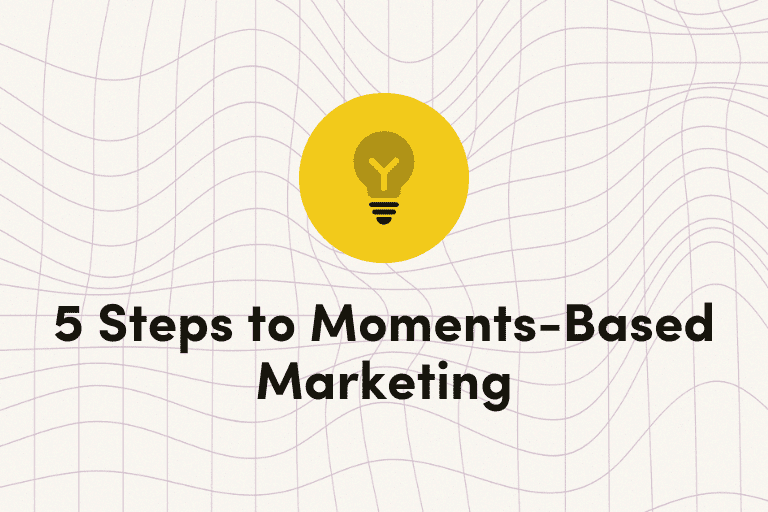Mobile Marketing Tips for Increased Engagement
When your customers are highly engaged, they’re more likely to shop with your brand, refer it to friends, and remain loyal customers over an extended period of time.
So, to increase customer engagement, it’s vital to focus on strategies that will help you build a stronger connection with your customers throughout their buying journey—especially through mobile marketing, as the majority of customers will be engaging with your brand on a mobile device at some point.
Here are some strategies for driving better customer engagement in mobile marketing.
Why Use Mobile Marketing for Customer Engagement?
Mobile marketing refers to any type of marketing that takes place on a mobile device such as a phone or tablet, and incorporates SMS marketing, push notifications, in-app messages, QR codes, and location-based marketing.
Mobile marketing allows you to reach customers on the go, no matter where they are, adopting whichever mobile channel they prefer to use. You can also incorporate mobile geolocation technologies that target a user based on location, such as geofencing and beacon technology.
Mobile usage is sky-high, with mobile purchases representing 73% of all e-commerce purchases. Plus, as many as 85% of purchases begin on one device and end on another, often starting out on mobile and concluding on a desktop computer. By prioritizing mobile marketing, you’ll be able to adapt to the way consumers shop today, using all the channels available to them to explore their options and make purchases.
Use SMS Marketing
SMS marketing enables you to send a text message to anyone who’s given your brand SMS marketing permissions. It boasts the highest open rates of any marketing channel, at 98%, and 90% of text messages are read within the first three minutes of being received.
Your SMS messages can be triggered by a customer action, such as opening a webpage or abandoning a shopping cart. They can also serve as part of a more comprehensive cross-channel marketing campaign in which the SMS message serves as one of several messages the customer receives, ensuring that they’re able to access the brand across whatever channel they choose to use.
Both SMS messages and push notifications are ideal for situations where you want to promote a limited-time offer or flash sale. Because these types of messages have high open rates and are typically opened within minutes, customers are far more likely to see them during the time period when you want them to engage.
Incorporate Push Notifications & In-App Messages
If your customers opt in to push notifications, this is a key strategy for driving high customer engagement on mobile. Push notifications and in-app notifications receive an average engagement rate of 26% for medium-performing apps, and 44% for high-performing apps. In contrast, the average open rate for general email marketing across industries is only 17%.
You can use rich push notifications, which incorporate images or video links, to tie back to an email marketing message they’ve already received and encourage them to engage with your brand’s content across the web and your mobile app.
Once the user is in the app, thanks to your push notification, you can take advantage of in-app notifications, which allow you to use more text to communicate with your users.
Promote QR Codes
In-store displays, digital displays, and direct mailers can be used to promote QR codes, a type of barcode that can be scanned by the customer’s smartphone camera to instantly direct them to a link. This strategy makes it easy to create easily trackable, physical promotional offers that customers can redeem on their phones. For in-store displays, QR codes can also be used to link to in-depth product pages and videos, so that customers can educate themselves about the products as they browse your aisles.
Incorporate Location-Based Marketing
You can use location-based marketing tools to send your customers personalized offers when they’re within a set range of your store, or even within your store when they’re near specific products.
For instance, you can use GPS location tracking to set up geofences, allowing you to send a promotion to visit your local store when customers are within a set radius. Or, for customers who are already at the store, you can use beacon technology for close proximity, such as providing a special discount on a particular item on the shelf in front of them.
You can also use location-based marketing when a prospective customer is physically in a particular region, so that you can promote an offer and begin a cross-channel marketing sequence. This is a great way to get new prospects into your sales funnel when promoting an in-store brand, and then continue to market to them through your owned marketing channels.
Tie it Mobile Customer Engagement Together with Cross-Channel Marketing
All of these different marketing channels and strategies can be combined as part of a comprehensive cross-channel marketing campaign. Using a cross-channel marketing platform like Iterable, you can integrate email, SMS, push notifications, in-app notifications, and direct mail to develop comprehensive mobile marketing campaigns that can be customized based on your customers’ preferences and behaviors.
By integrating all of your customer data in one centralized location, you can use it to customize which channels you use to send your messages and when. If a customer accesses your website from a mobile phone, for instance, your brand might default to sending them an SMS message rather than an email, knowing that they’re likely to engage. And, by personalizing the content based on their unique preferences, you’ll be able to promote offers you know they'll respond to positively.
Mobile marketing is a key strategy for driving customer engagement. By using the mobile technologies at your disposal as part of a broader cross-channel marketing plan, you’ll be able to reach your customers with highly relevant content that will lead to more conversions, revenue, and customer satisfaction.































